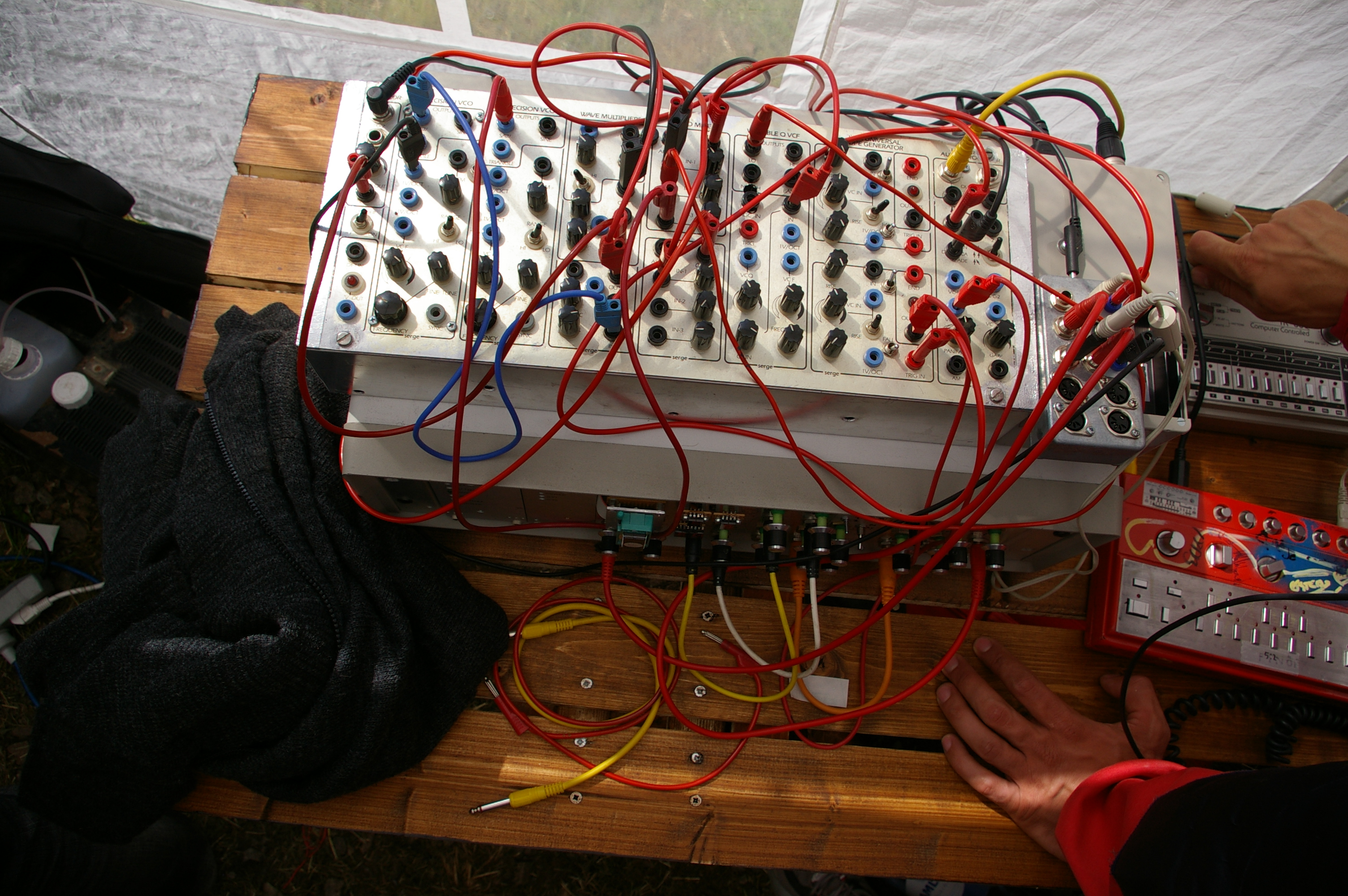Serge synthesizer on:
[Wikipedia]
[Google]
[Amazon]

 The Serge synthesizer ( Serge Modular or Serge Modular Music System) is an analogue
The Serge synthesizer ( Serge Modular or Serge Modular Music System) is an analogue

 The Serge synthesizer ( Serge Modular or Serge Modular Music System) is an analogue
The Serge synthesizer ( Serge Modular or Serge Modular Music System) is an analogue modular synthesizer
Modular synthesizers are synthesizers composed of separate modules for different functions. The modules can be connected together by the user to create a patch. The outputs from the modules may include audio signals, analog control voltages ...
system originally developed by Serge Tcherepnin
Serge Alexandrovich Tcherepnin (russian: Серге́й Александрович Черепнин; born 2 February 1941) is a Russian-American composer and electronic-instrument builder of Russian-Chinese parentage. Tcherepnin is noted for creati ...
, Rich Gold and Randy Cohen at CalArts in late 1972. The first 20 Serge systems (then called "Tcherepnins") were built in 1973 in Tcherepnin's home. Tcherepnin was a professor at CalArts at the time, and desired to create something like the exclusively expensive Buchla
Buchla Electronic Musical Instruments (BEMI) was a manufacturer of synthesizers and unique MIDI controllers. The origins of the company could be found in Buchla & Associates, created in 1963 by synthesizer pioneer Don Buchla of Berkeley, Californi ...
modular synthesizers "for the people that would be both inexpensive and powerful." After building prototypes, Tcherepnin went on to develop kits for students to affordably build their own modular synthesizer, production taking place unofficially on a second floor CalArts balcony. This led to Tcherepnin leaving CalArts in order to produce kits commercially, starting in 1974.
After leaving CalArts, Serge had a small factory on Western Avenue in Hollywood. He relocated to a three-story Victorian house on Haight Street in 1980. While the synthesizers were inexpensive compared to Moog, Buchla, and other manufacturers, Serge Tcherepnin's emphasis was always on providing musicians with quality equipment.
While Serge synthesisers have been compared to Buchlas, their underlying philosophies are very different. Serge modules were designed to bring many aspects of the circuits out to the front panel so modules can be patched in unusual and creative ways beyond the “normal” functions of that type of module. In contrast, Buchla modules were optimised to do one thing very well, using different signal levels and connector types for “sound and structure” (audio and control).
Serge synthesizers have been used by composers such as Michael Stearns and